Boomer Fitness
Boomer fitness, or for that matter any kind of fitness, really got started with us. After all, when did catchphrases like “no pain, no gain” and “feel the burn” first take hold? In the 70s, when many of us were in our teens and early 20s. It was the size and strength of our age group that brought fitness into our mainstream vocabulary. And speaking of vocabulary, our fitness passion coined yet another term – boomeritis – although that one came much later (scroll down to Glossary).
Granted, back in the day our interest in boomer fitness was much more cosmetic – we just wanted to look good. Immediate gratification was the goal. How many of us at 20 years old really knew, much less cared, about the long term benefits for our general health?
But now we do. At the half-time stage of our lives (remember that 50 is the new 40…), we know that boomer fitness is absolutely essential to the quality and quantity of our coming years, no matter what our pursuits. What we eat (and don’t) and how we exercise (and don’t) are all important.
Boomer Fitness - Glossary of Terms
Boomer fitness has a lot of moving parts - literally – not to mention a lot of terminology. Some terms are common, but others we might never have heard of, such as:
- boomeritis – a term coined in the late 90s categorizing the various hurts such as bone and joint pains, injuries, and age-related ailments incurred by us boomers, thinking that our bodies can do the same things at 50 that it did at 25.
- cardio – aka endurance training - like aero- bic exercise, a means of physical condition- ing to improve circulation and respiratory function in our body through vigorous sus- tained exercise, such as running, swimming, or cycling.
- cortisol - aka hydrocortisone - the major circulating hormone of the outer layer of the adrenal gland, and often referred to as the stress hormone involved in the response to stress and anxiety, in turn increasing blood pressure and blood sugar, and reduc- ing immune responses.
- ectomorph – a body shape characterized by long slender arms and legs, a narrow chest and abdomen, with little body fat and little muscle.
- endomorph – a body shape characterized by a round head, a large, round abdomen, short arms and legs with fat upper arms and thighs, but slender wrists and ankles, with a lot of body fat.
- Genetics - the study of inherited traits and characteristics in the body, and the science of variation.
- high impact exercise – cardiovascular exercise in which both feet leave the ground simultaneously, such as running, jogging, jumping jacks, jump rope, or aerobic dance involving jumping or bouncing movements; more suitable for exercise veterans wanting to develop greater endurance, power, agility and coordination.
-
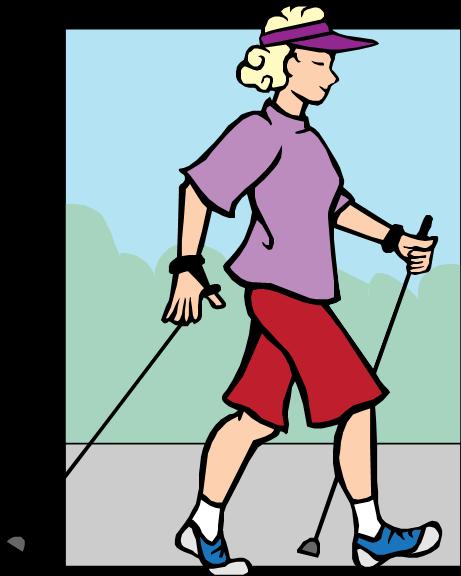
low impact exercise - cardiovascular exercise that has a reduced impact on the legs, knees, and feet, such as walk- ing, swimming, bicycling and aerobic dance not involving jumping or bouncing movements; most suitable for exercise beginners and those who are overweight, pregnant, or with spinal or joint ailments.
- metabolism – a complex biochemical process in which the body converts food and drink into energy, by combining those calories with oxygen to release energy the body needs to perform its various functions; the process of metabolism establishes the rate at which the body burns calories and, ultimately, how quickly the body gains or loses weight; this rate is influenced by age (metabolism naturally slows about 5% per decade after age 40), sex (men generally burn more calories at rest than women), proportion of lean body mass (the more muscles, the higher the metabolic rate), and heredity.
- muscle atrophy - a decrease in the mass of the muscle, a partial or complete wasting away of muscle, resulting in muscle weakness (the ability to exert force is related to muscle mass).
- mesomorph – a body shape characterized by well-defined muscles and large bones, well developed arms and legs, and the torso tapered to a relatively narrow and low waist (gains fat more easily than ectomorphs).
- strength training – aka resistance training or weight training - the use of resistance to muscular contraction to build the strength, endurance and size of skeletal muscles, most commonly achieved through the use of gravity or elastic/hydraulic forces.
- stress – the body’s response to interactions between persons and their environment, perceived as straining or exceeding the body’s capacity to adapt and threatening its well-being.
- type 1 diabetes - a lifelong disease in which blood sugar – aka glucose - levels are too high, because the body does not produce insulin (insulin lets blood sugar enter the body’s cells to be used for energy; however, when insulin is unable to do so, the cells don’t get the sugar they need, causing a build-up of sugar in the blood which ultimately can damage the heart, kidneys, nerves, blood vessels and eyesight).
- type 2 diabetes -(more common than type 1 diabetes)a lifelong disease wherein the cells in the body can’t use insulin in the correct manner or when the pancreas can’t make enough insulin (insulin lets blood sugar—aka glucose—enter the body’s cells to be used for energy; however, when insulin is unable to do so, the cells don’t get the sugar they need, causing a build-up of sugar in the blood which ultimately can damage the heart, kidneys, nerves, blood vessels and eyesight).
- Assess Your Condition
- At least 2/3 of all American adults would be classified as overweight or obese.
-

Nearly 25% of all Americans are currently on some sort of diet, and most (95%) will fail.
- Preventative care now is easier and less expensive than “reactive” care (think what that might do to health care costs nationally…)
- Always best to have your doctor recommend a diet and exercise program that matches your current condition of health; normally we see our doctor for specific items, but boomer fitness is for ALL of our parts, moving and otherwise!
- Set Personal Goals and Commit
- Understand your body type to know what is realistic for you (scroll down to that item).
- Create a vision for what you want to achieve, in a form that reminds you everyday (it may seem hokey, but a picture on the refrigerator that you and others in your household see everyday will help you stay accountable).
- Know that you didn’t get heavy and out of shape overnight, and a hard body won’t come overnight either.
- Know that you’re doing this for YOU, and quite likely for the ones you love.
- Be accountable to yourself and/or a personal trainer, other family members, friends, members of your fitness class, anyone that you look in the eye on a regular basis.
- Start Slow and Make Gradual Progress
- Take one step at a time; “crash” programs do just that – crash!
- Plan to achieve milestones, not plateaus.
- Walking is a great start, and add strength training as you progress (scroll down to Low Impact Cardio Exercises).
- Don’t skip any meals.
- Start reading labels of food packages and know what to avoid (scroll over to Boomer Diet).
- Give yourself enough time to see results.
- Make the Right Choices
- Gather the lists of healthy food choices

and exercises based upon your doctor’s advice.
- The best choices from those lists are the foods you’ll eat and the exercises you’ll do, so choose the ones you like (without cheating).
- Give yourself enough variety in your food menus and exercise routines to keep your interest; avoid repetition.
- Don’t Forget the Basics
- Sleep – 7 to 8 hours each night at the same times.
- Drink water to stay hydrated – when was the last time you drank 7-8 glasses of water in a day?
- Organize your daily schedule to allow at least 30 minutes for exercise.
-
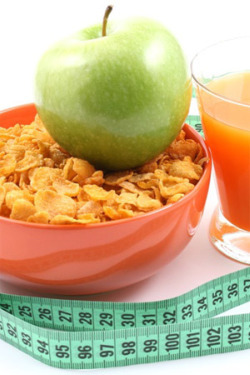
Always stretch before and after exercising.
- Eat breakfast each day – a balance of carbohy- drates, protein and fat to get your metabolism going.
- Manage your stress – first slow down, write out the things that bring you stress, organize them like a “to do” list and then do what’s necessary to resolve each item, one at a time.
- Start Today
- Know that boomer fitness may be challenging, but always consider the benefits vs. the consequences.
- Know that success is largely determined just by showing up!
- Walking - with just a bit or urgency in our step, we can burn up to 180 calories in 30 minutes, and if we include hills or some interval training (a period of more intense action such as running or sprinting), the calories burned go higher. We can lengthen and vary our route as our initial conditioning improves.
- Swimming - with access to a pool we can
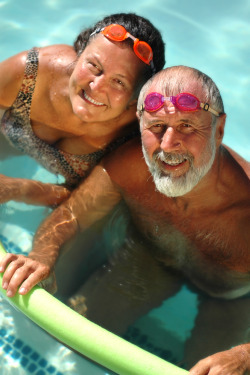
burn up to 400 calories in 30 minutes by swimming with virtually no stress on our joints; swimming is especially good for muscle rehab or for those with arthritis. Water aerobics, treading water, or even walking in the pool are some other options.
- Rowing - using a rowing machine can burn 300 calories in 30 minutes, plus the beneficial work given to our arms and shoulders.
- Step Aerobics - a high intensity session can burn up to 400 calories in 30 minutes, although it may be eas- ier to learn the movements first and progress to that level by starting with a class or video instruction. Step aerobics are good for cardio while also targeting our legs, hips and butt.
- Bicycling - can burn up to 250 calories in 30 minutes, indoors or outdoors, with virtually no impact on our knees, hips or ankle joints.
- Elliptical Trainer - movements that include arm swings with leg motion can burn up to 300 calories in 30 minutes, while also protecting shins and joints (a good break from running/jogging).
-
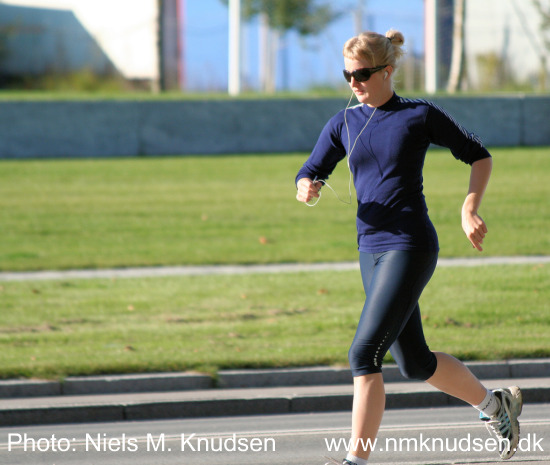
Running/Jogging - can burn up to 300 calories in 30 minutes at a sustained running speed of 5 mph (recommend a gradual progression over several ses- sions, as beginning runners will likely experience initial soreness in ankles and shins).
- Cross-Country Skiing - can burn up to 325 calories in 30 minutes, involving both the upper and lower body equal- ly, but definitely requires some pre- conditioning to get to 30 minutes; can also be done equally well on a gym machine where snow is not an option.
- Racquetball/Handball – definitely involves quick reflex- es and a skill level (some practice/learning sessions are advisable), but can burn up to 400 calories in 30 minutes; also provides good conditioning for legs.
- Rock-Climbing – only for the most ambitious among us, but can burn up to 375 calories in 30 minutes; does require some training and pre-conditioning.
- Squats
- Stand up straight with feet placed apart the width of your hips and pointing straight forward or angled slightly outward, and holding a hand weight/dumbbell in each hand
- Lower your hips towards the floor by bending your knees to a 90-degree angle as if you’re sitting on a chair until your thighs are parallel to the floor, while keeping your torso vertical and your abs pulled in
- Use your thigh muscles to slowly push yourself up, keeping your weight on your heels
- Push-Ups
- Place yourself facing the floor and parallel to it, with legs and back in a straight line, and balancing your weight on your toes (use knees if necessary) and the palms of your hands placed shoulder-width apart
- Keep your back and legs in a straight line throughout – no humpback or sagging
- Use your arms to slowly lower your upper body to the floor until your arms form a 90 degree angle while breathing in
- Breathe out and use your arms to raise yourself back up to the starting position, again keeping your back and legs in a straight line
- Lunges
- Grasp a hand weight/dumbbell in each hand
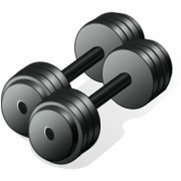
with arms held vertical throughout, and stand with one foot forward and on foot back, about three feet apart
- Lower your hips to the point where each knee forms a 90 degree angle while keeping your torso vertical, making sure that your knees do not move forward past your toes
- Raise your hips back up to the starting position, keeping your weight on your heels
- Planks
- As if you were going to do a push-up, place yourself facing the floor with your legs together and your elbows/forearms on the floor next to your chest
- Tuck in your abs and raise your hips up so that your weight is evenly balanced between your elbows/forearms and your toes, keeping your back and legs in a straight line (no humps or sags)
- Hold the up position for 30-60 seconds, keeping your abs tucked in
- One-Arm Rows
- Grasp a hand weight/dumbbell in your right hand, extend your right foot all the way back from your left foot, keeping your back and right leg in a straight line and causing your left leg to bend at the knee
- Rest your left forearm on your left thigh
- Inhale and pull the dumbbell up and slightly away from your torso in a recoil motion
- Exhale and lower the dumbbell down until your arm is fully extended but without locking your elbow
Do as many repetitions as you’re comfortable with, then transfer the dumbbell to your left hand and reposition your feet and right forearm accordingly, i.e., extend your left foot all the way back from your right foot, keeping your back and left leg in a straight line causing your right leg to bend at the knee, and then rest your right forearm on your right thigh. Perform these routines at least twice each week.
- An ectomorph (aka long and lanky) has difficulty gaining muscle mass, but can lose fat easily. For that reason, cardio exercise is more essential for conditioning than it would be for losing fat. High intensity exercise (strength training) would be necessary for muscle gain, but since muscle recovery is slow, such exercise should be less frequent and of shorter duration. Metabolism is higher, and so these bodies will need more calories from protein and good fat, and some may require more carbohydrates as well.
- An endomorph has more difficulty losing fat, and at times will have difficulty gaining muscle. Cardio is essential for fat loss, and such exercise should be higher intensity and more frequent; recovery time is fairly quick. Calorie intake must be controlled because metabolism is slower; more protein is needed.
- Mesomorph (stocky, thicker muscles) gains muscle mass very easily and can also lose fat easily. Cardio is best for fat loss, but mesomorph bodies respond well to either high volume or high intensity exercise as recovery time is quick. Calorie intake is generally not an issue if an overall balance is maintained, since the metabolism rate is fairly high.
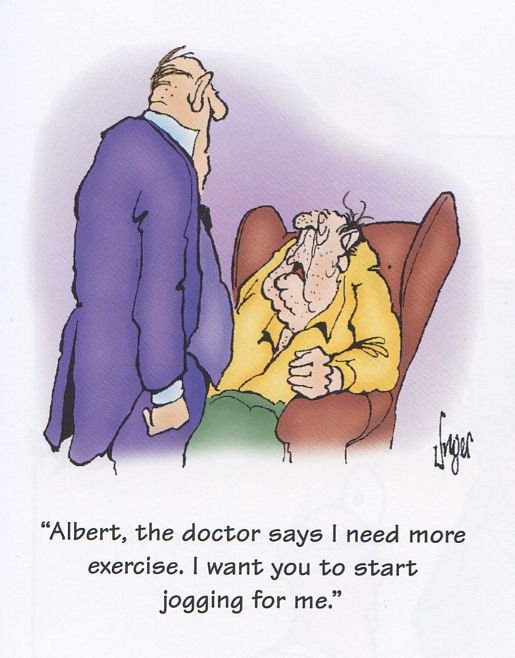
Boomer Fitness – Keys to Success
Over the past century, major advancements in medicine and nutrition were the real keys to greater longevity. In the early 1900s, people ate whatever was available, exercise was mostly limited to physical labor, and the average life expectancy was less than 50. But by 2000, our
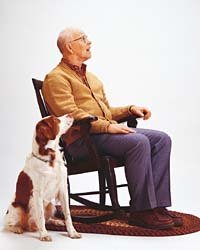
parents were expected to live well into their 70s at least, just by virtue of those advancements. There was no concerted effort on their part, no real concern for anything resembling boomer fit- ness.
As our parents grew older, their activity levels generally dropped. Studies have shown that 60% of all adults over 75 no longer participate in any type of physical activity. But more so than our parents, we know now that a sedentary lifestyle brings at least as much risk for ailments such as heart disease, stroke, diabetes, high blood pres- sure, colon cancer, obesity and osteoporosis as does advanced age.
When it comes to aging, we boomers have a pretty clear choice. Sure, we can never stop the hands of time, but isn’t it better if those hands just touch us instead of giving us a head slap?
The all important first steps to boomer fitness:
Boomer Fitness – Keys to Weight Loss
The real key to weight loss is simple – we lose weight when we burn more calories than we eat. Of course, the flip side is also true – we gain weight when we eat more calories than we burn. So much like our household budget, we need to manage what’s coming in and what’s going out on a regular basis.
Now that we’re in our midlife stages, boomer fitness becomes more difficult. Our muscle fibers start to shrink in size and number with age, a process known as muscle atrophy. We start to gain fat, especially around the middle, and counterproductive to losing weight (fat burns fewer calories than muscle). Our loss of muscle mass is related to, and perhaps partially caused by, a slower metabolic rate which also comes from age.
So what’s our remedy? Any quick fixes or miracle discoveries lately – seems like there is always some recent revelation. Actually, the best remedy has been known for a long time, many centuries in fact, going all the way back to the time of Hippocrates, a Greek physician who lived during the 4th century before Christ, and generally known as the father of western medicine:
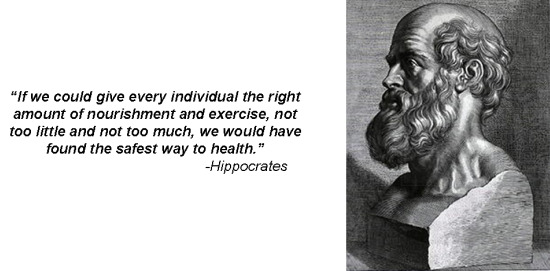
Now if we fast forward to today – at least to our high school algebra class – we would have a formula that looks like this:
Safest Way to Health = Nourishment + Exercise, or
Boomer Fitness = Diet + [Exercise], or
Boomer Fitness = Diet + [Cardio Exercise and Strength Training Exercise]
Since we probably find eating a lot easier than exercise, let’s start with the more challenging part of this equation – exercise (scroll over to Boomer Diet for the “easy” part).
Boomer Fitness – Getting Started With Low-Impact Cardio Exercises
One of the initial goals of boomer fitness is getting 20-30 minutes of exercise at least 3 times each week. If we are new to exercise, and given the above statistics a lot of us are, we can choose either of two options. We can visit a health club and get a program matched to our particular needs and condition, and start from there. But if we choose to go it alone, it’s best to start slow with some low-impact exercises:
Boomer Fitness - High-Impact Cardio Exercise
High-Impact exercises can burn more calories than does low-impact, but also increase the risk of joint pain or injuries:
Whether it’s low or high impact, the type of cardio that’s best will vary from person to person. Such variables include a person’s age, gender, metabolism, daily calorie intake, body weight, percentage of body fat and overall level of boomer fitness.
Low and high impact routines can certainly be mixed one day to the next, or even during the same session. The goal starting out is doing cardio exercises abut 3 times each week, and working up from 20 minutes to 30-45 minutes for each session. Not only good for burning calories, cardio also provides conditioning for the heart and lungs.
Boomer Fitness – Strength Training
As outlined above, cardio exercise improves our endurance levels while strength training builds muscle mass and improves bone density - each is important for maintaining boomer fitness as we age. Strength training also improves the structural integrity of our joints and our sense of balance, and some studies have shown a correlation to preventing type 2 diabetes.
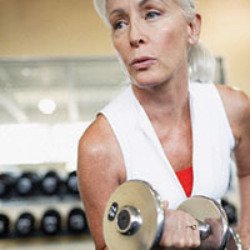
In our 40s, our bodies start losing about a ¼ pound of muscle mass each year, a rate exacerbated if our lifestyle is more sedentary. But by maintaining or even increasing our percentage of muscle, we cre- ate a greater resting energy after exercise, which in turn helps burn more calories during the course of our day.
Combining strength training with cardio exercise gives us a more holistic approach to boomer fitness. For example, we can schedule our cardio work for M-W-F, with strength training for T-TH-S (Sunday is still a day of rest). Alternating our days this way not only brings variety to perk our interest level, but also enables recovery time for the affected parts of our body.
Five exercises most recommended for beginner strength training:
Do at least 12-25 repetitions per session, at least twice each week.
Work you way up to 10-15 reps initially per session, 2-3 times each week.
Do 12-15 repetitions per session, 2-3 times each week.
Do as many repetitions as you’re comfortable with per session, at least twice each week.
These strength training exercises target most of our major
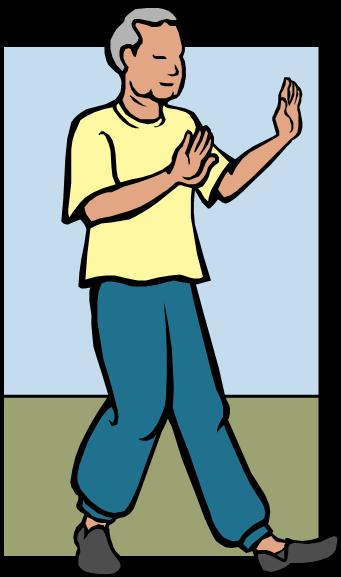
muscle groups – chest, back, shoulders, biceps, triceps, quadriceps, ham- strings and abs – and can easily be performed at home without any special equipment. Beginners can perform these routines at their own pace and comfort level, progressively building strength and tolerances before advancing to machine work if desired.
Always remember to stretch fully before each session, and to maintain good posture throughout each routine.
Boomer Fitness – Know Your Body Type and Plan Accordingly
Regardless of age, each of our bodies can be categorized by certain characteristics, which in turn determine how soon – and how much – success we have in reaching a boomer fitness level. Allowing for some “cross-over” tendencies, there are three (3) distinct body types to which each of us have “morphed” (scroll up to Glossary for definitions) - an Ectomorph, an Endomorph, or a Mesomorph:
So, what type of body are you? With boomer fitness, the temptation is to compare our results with everyone else, or with a one-size-fits-all model. By recognizing the type of body we have, we can tailor our efforts to our own specific needs and capabilities, with less worry for how long it takes getting there. The keys are knowing “what” we are, being realistic, and staying committed.
Boomer Fitness – Avoiding Boomeritis
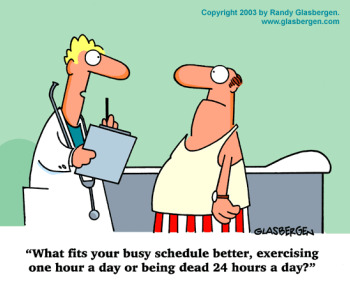
In our quest for boomer fitness, it’s very possible to catch boom- eritis – aka the weekend warrior syndrome. Prime candidates are any of us still believing we can play the same sports at 50 that we did at 25 (or less), carrying just a few extra pounds along with stress, and a tight workday schedule that allows no time for regular exercise, giving us a sense of urgency to cram some- thing extreme into the weekend. Ouch! That’s when boomeritis can bring injuries to the back, neck, knees, tendons, ligaments and bone fractures.
What’s the cure? A strength training program as outlined above to build muscle mass, particularly our core muscles to protect against back injuries and to retard the loss of bone density. A greater focus on nutritional needs is also necessary. For example, magnesium plays an integral role in muscle strength, contraction and relaxation, and studies have found that higher levels of magnesium promote stronger hand grips and greater leg power. Magnesium can be had naturally from a variety of fruits, grain, dairy products and dark leafy vegetables.
Boomer Fitness – Diet
For the second part of our equation, scroll over to Boomer Diet!
Return from Boomer Fitness to Bomer HealthReturn from Boomer Fitness to Baby Boomers R We
